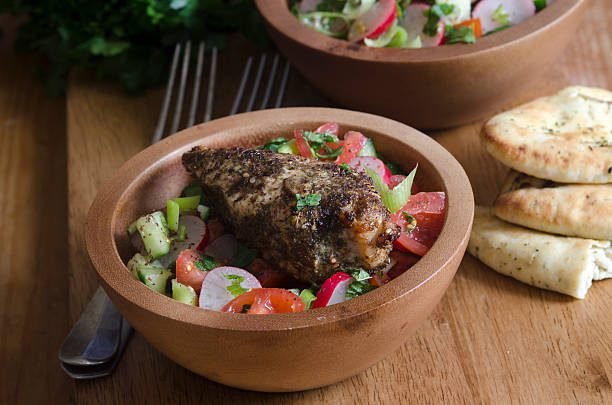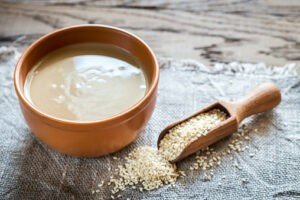Za’atar (in Arabic, زعتر): The Essence of Arab Cuisine
What is Zaatar and What is it Used For?
Za’atar is a spice blend that plays a significant role in Middle Eastern Arab cuisine. It has become a popular element in traditional recipes from Syria, Jordan, Lebanon, Palestine, and, to a lesser extent, Turkey. It’s important to note that the term “za’atar” specifically refers to Origanum syriacum, known as biblical hyssop.
Unparalleled Flavors of Zaatar
Za’atar is highly prized for its distinctive flavor and aroma, making it one of Lebanon’s most flavorful herbs. Wild zaatar is traditionally harvested in the country’s rural areas during the spring. This zaatar can be enjoyed either fresh or dried, while the dried variety is used to create various blends available in the market.
Botanical Diversity of Zaatar in Lebanon
It’s worth noting that in Lebanon, there are different types of wild zaatar, although they are collectively referred to as “za’atar” in Arabic. In reality, they belong to different genera and species within the same botanical family, Lamiaceae. Some of these include Origanum syriacum, Origanum ehrenbangi, Thymus vulgaris, Satureia thymbra, and Thymbra spicata. These herbs, known for their distinctive aroma, have also traditionally been used for medicinal purposes, such as treating gastrointestinal diseases, nausea, indigestion, and bacterial infections.
Za’atar Zoubaa: Lebanese Oregano
Origanum syriacum, known as “Zaatar zoubaa” or Lebanese oregano, is the primary variety of zaatar in Lebanon. It’s dried, ground, and mixed with sumac, sesame seeds, and salt to create the famous and delicious zaatar blend. Its fresh, velvety leaves are also used in mixed salads with tomatoes, onions, and olives. A popular dressing for this salad combines lemon juice, pomegranate syrup, sumac, and olive oil. Moreover, this type of zaatar is often used to replace spinach in the preparation of fatayer, a traditional savory pastry.
Thymus Vulgaris: Medicinal Zaatar
Another variety, Thymus vulgaris, is essential in all Lebanese households due to its medicinal properties. This herb is considered an effective remedy for mild food poisoning, thanks to its high content of two primary aromatic oils: thymol and carvacrol, which help control and neutralize food-borne bacteria. From a culinary perspective, Thymus vulgaris is often preserved in pickles, a process that reduces its bitterness, and it is best enjoyed with grilled meats or alongside fresh cheese and olives in a salad.
Composition of Zaatar
Zaatar, that cherished spice blend in Middle Eastern cuisine, is known for its characteristic composition. Typically, it is composed of a variety of ingredients that contribute to its unparalleled flavor and aroma. Essential elements in the composition of zaatar include hyssop, sumac, sesame seeds or sesame, whether toasted or untoasted, and a touch of salt to balance the flavors. However, this blend can vary in its preparation and may include additional aromatic herbs that enhance its flavor. Some of these aromatic herbs that are often found in zaatar include savory, marjoram, Syrian oregano, thyme, cumin, or fennel.
Culinary Uses of Zaatar
Zaatar possesses exceptional versatility in the kitchen, making it a highly appreciated condiment in many recipes. It is often used as a seasoning for grilled meats, imparting a distinctive and aromatic flavor to dishes. It also pairs perfectly with grilled vegetables, enhancing their flavor with an authentic Middle Eastern touch.
An interesting preparation involves creating a paste by mixing zaatar with olive oil, known as “za’atar-ul-zayt” or “zayt-tu-zaa’tar.” This paste is commonly used as a dipping sauce, perfect for making sesame rings known as “ka’k.” These rings acquire a unique flavor thanks to the combination of olive oil and zaatar.
In Middle Eastern cuisine, zaatar is also used to make miniature pizzas, where this spice blend adds an unmistakable flavor. A popular way to enjoy zaatar is by spreading it on pita bread, whether toasted or untoasted. This delightful combination creates an exquisite and aromatic bite that is a favorite in the region.
Furthermore, zaatar has become an essential ingredient for scrambled eggs, as it is sprinkled on top to give them a distinctive flavor. These eggs are the perfect accompaniment to the same type of pita bread, drizzled with olive oil, creating an authentic and delicious flavor combination.
Finally, some people enjoy dipping “caak,” which are braided wheat flour rings with yeast and anise, decorated with sesame seeds, in olive oil and then in zaatar, adding a special touch to this appetizer.
Zaatar, with its unique blend of spices and herbs, adds an authentic flavor to a variety of dishes, making it a fundamental element in Middle Eastern cuisine.

Manouche Zaatar Recipe
In this article, I will guide you through the Manouche zaatar recipe and share some interesting insights about this tasty bread. Get ready to discover a unique culinary experience!

Zaatar Chicken Recipe: Flavor and Tradition on a Plate
This Zaatar Chicken Recipe is a delight that combines culinary tradition with the exceptional flavor of zaatar. Enjoy this unique dish that is sure to be a favorite on your table!
See more Arabic food recipes here.
- Interactive Classes: Our classes are dynamic and participatory. You will learn in a fun and effective way.
- Native Instructors: We have native Arabic instructors who will guide you through every step of the learning process.
- Flexibility: You can study from the comfort of your home and adjust your schedule according to your availability.



